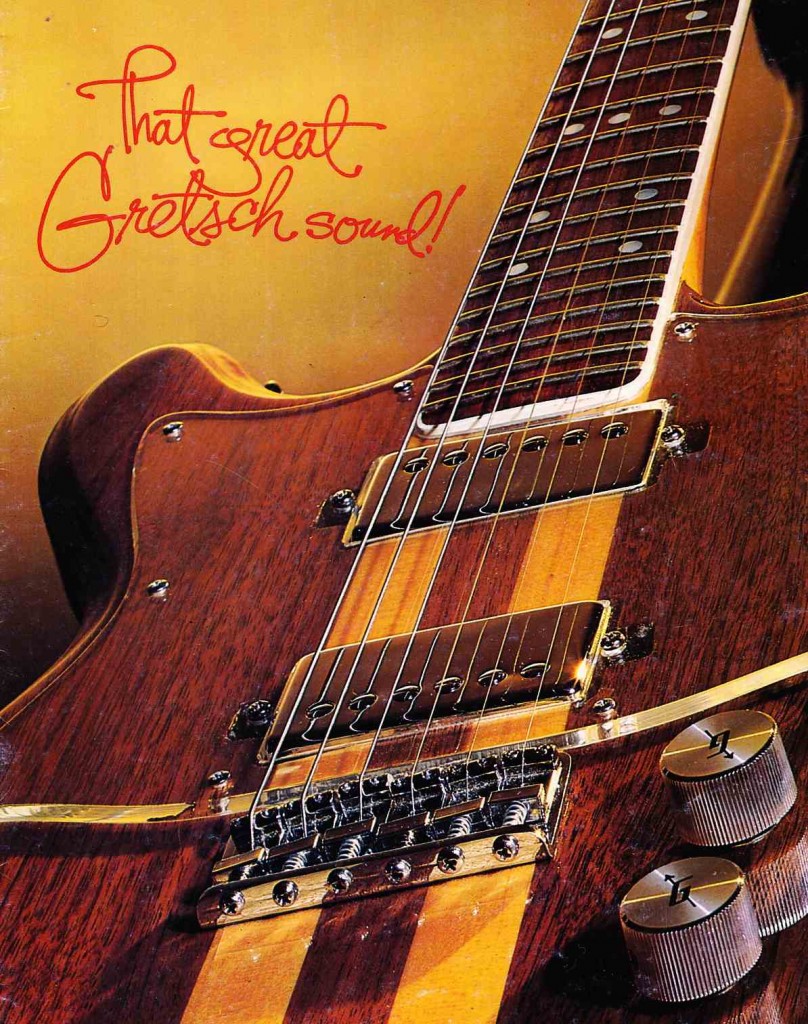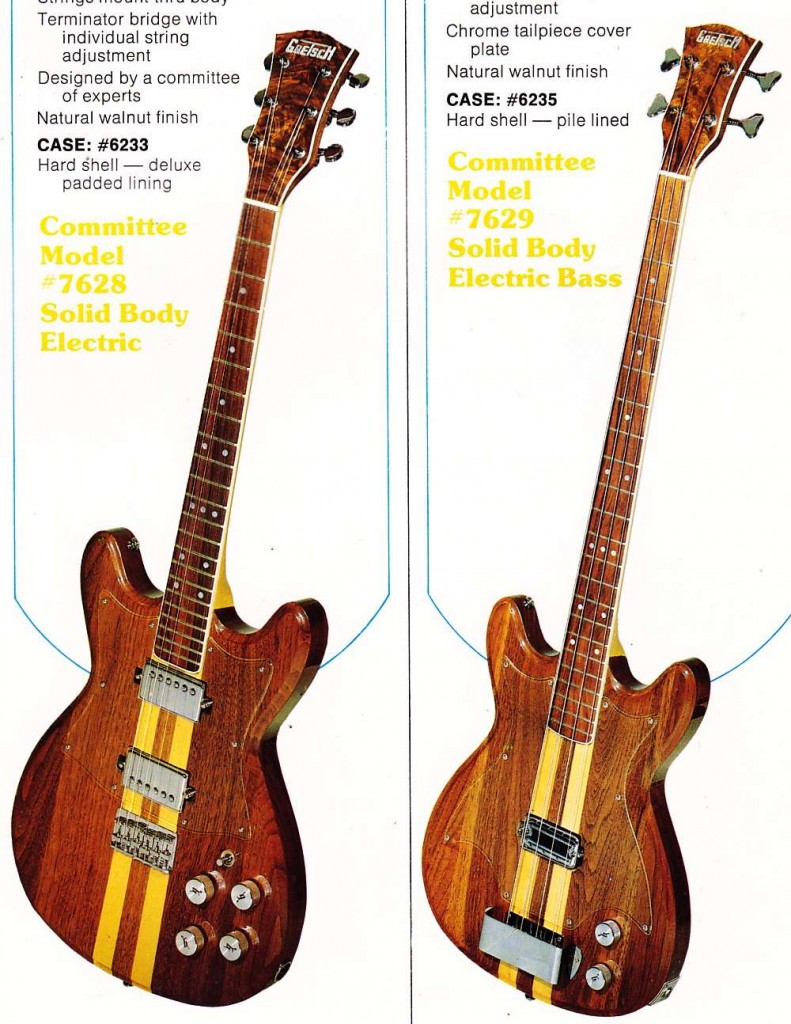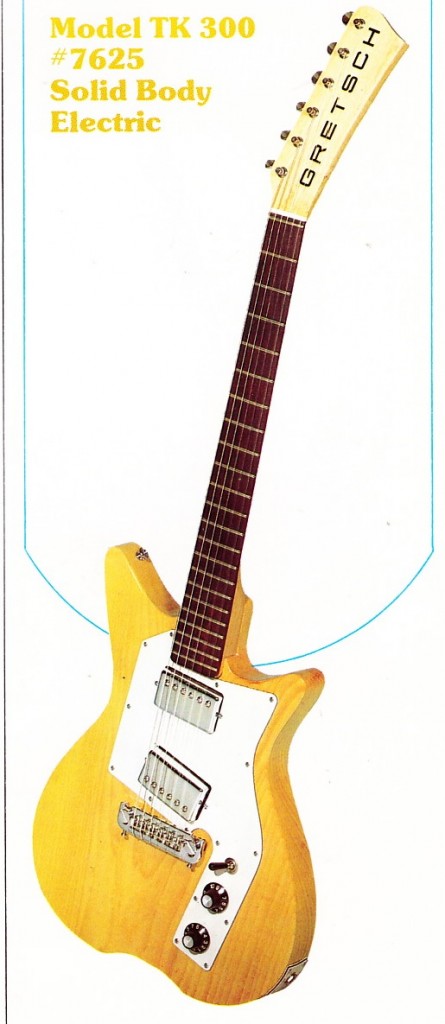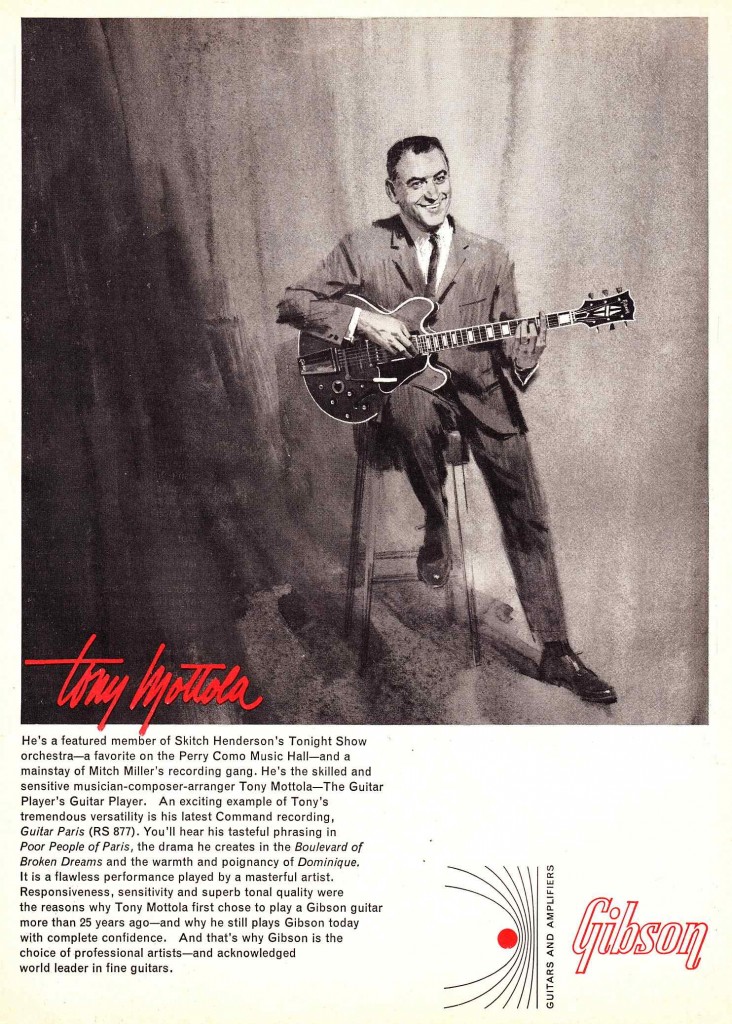 Above: Tony Mottola with a Gibson ES -355 in 1966.
Above: Tony Mottola with a Gibson ES -355 in 1966.
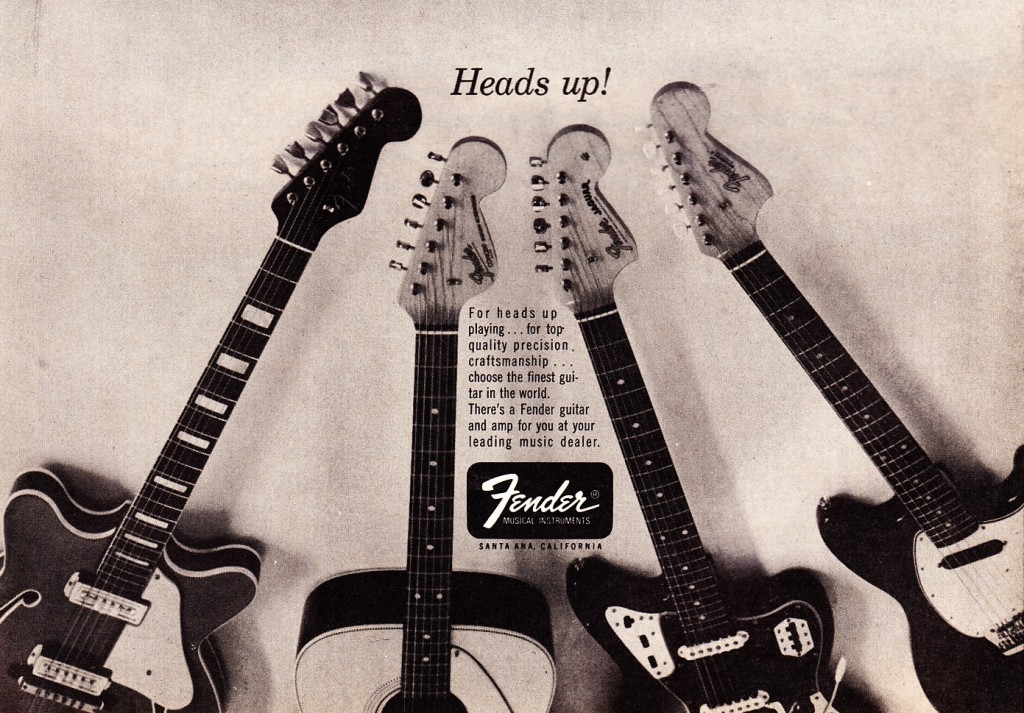 Misc Fender guitars circa 1966: a Coronado 2, an acoustic (perhaps a Villager?), a Jaguar, and the humble Musicmaster.
Misc Fender guitars circa 1966: a Coronado 2, an acoustic (perhaps a Villager?), a Jaguar, and the humble Musicmaster.
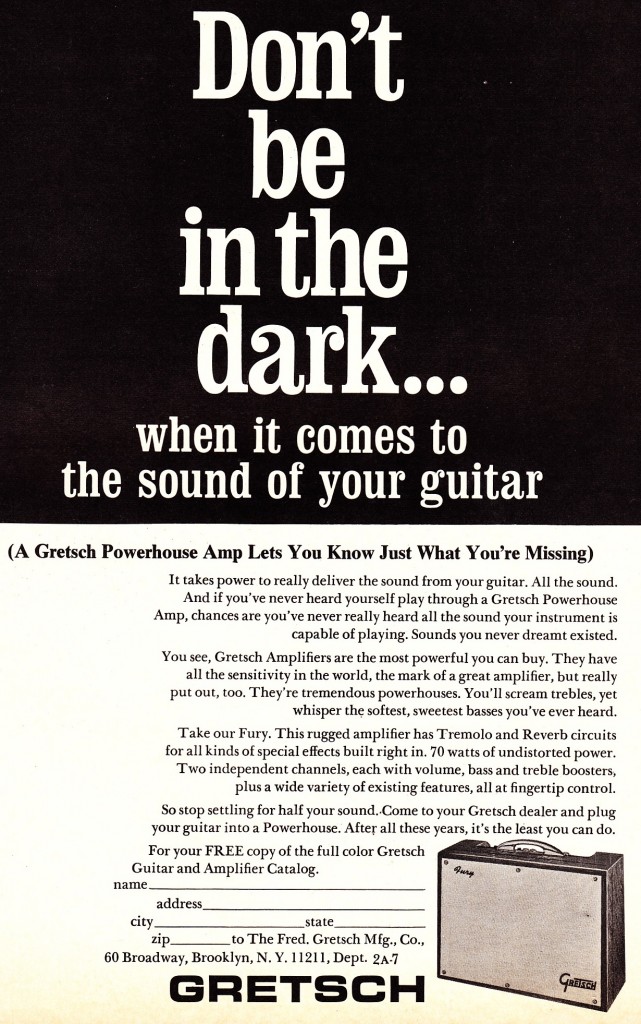 Above: the very rare Gretsch Fury Amp circa 1966. This is actually a fairly unique amplifier. There is one on eBay right now that’s about to sell and it has two output transformers: whether this is a 2-way system or perhaps an dry/effects split operation or panning tremolo I cannot tell. Can anyone provide a schematic for this unit? It does not seem to be currently available on the ‘net.
Above: the very rare Gretsch Fury Amp circa 1966. This is actually a fairly unique amplifier. There is one on eBay right now that’s about to sell and it has two output transformers: whether this is a 2-way system or perhaps an dry/effects split operation or panning tremolo I cannot tell. Can anyone provide a schematic for this unit? It does not seem to be currently available on the ‘net.
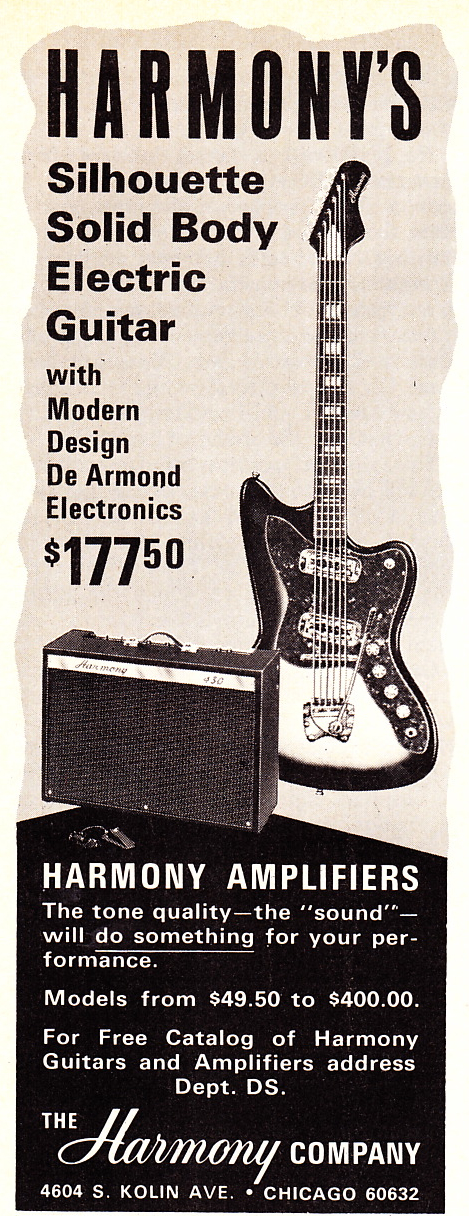 Above: The Harmony Silhouette guitar circa 1966. I passed on an unplayed, flawless example of this thing for $175 last year and wow do i regret it. While not a great instrument in most senses, in the right hands these Harmonys have a zing-y percussive tone that cannot be imitated. The instrument’s personality comes across even in the iphone-audience-recording that’s i’ve inserted below. Great Lennon-meets-Hendrix playing here. Also btw check out how Annie Clark (or her FOH guy,,,) flips on the vox ADT effect for the choruses. Great performance all around.
Above: The Harmony Silhouette guitar circa 1966. I passed on an unplayed, flawless example of this thing for $175 last year and wow do i regret it. While not a great instrument in most senses, in the right hands these Harmonys have a zing-y percussive tone that cannot be imitated. The instrument’s personality comes across even in the iphone-audience-recording that’s i’ve inserted below. Great Lennon-meets-Hendrix playing here. Also btw check out how Annie Clark (or her FOH guy,,,) flips on the vox ADT effect for the choruses. Great performance all around.
